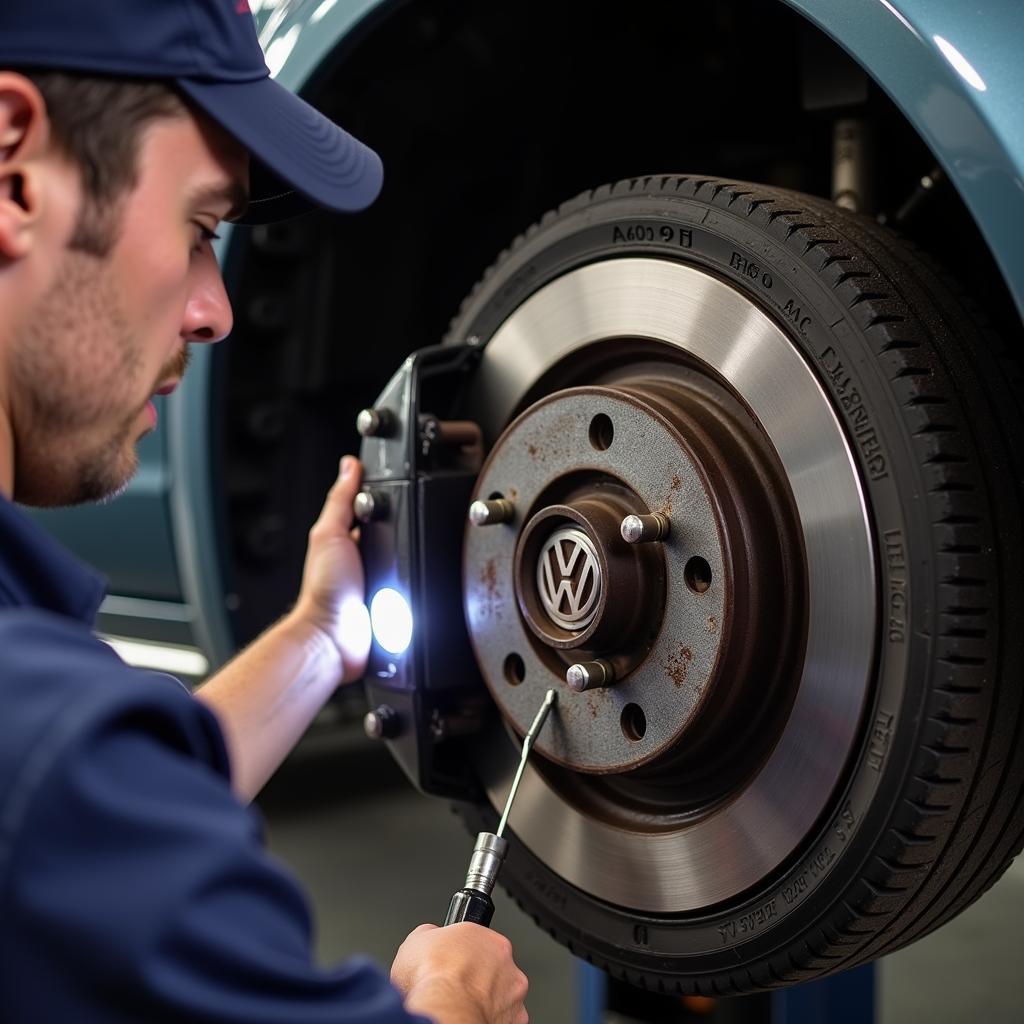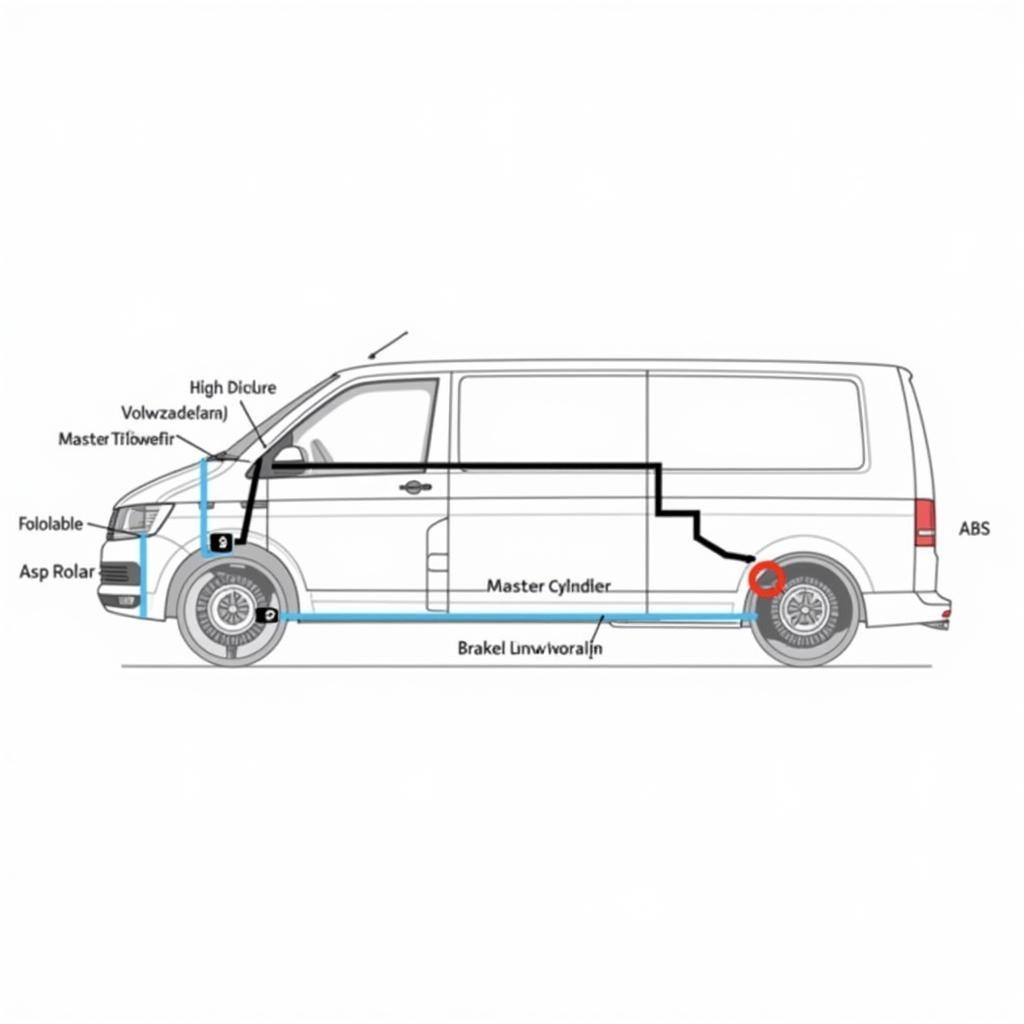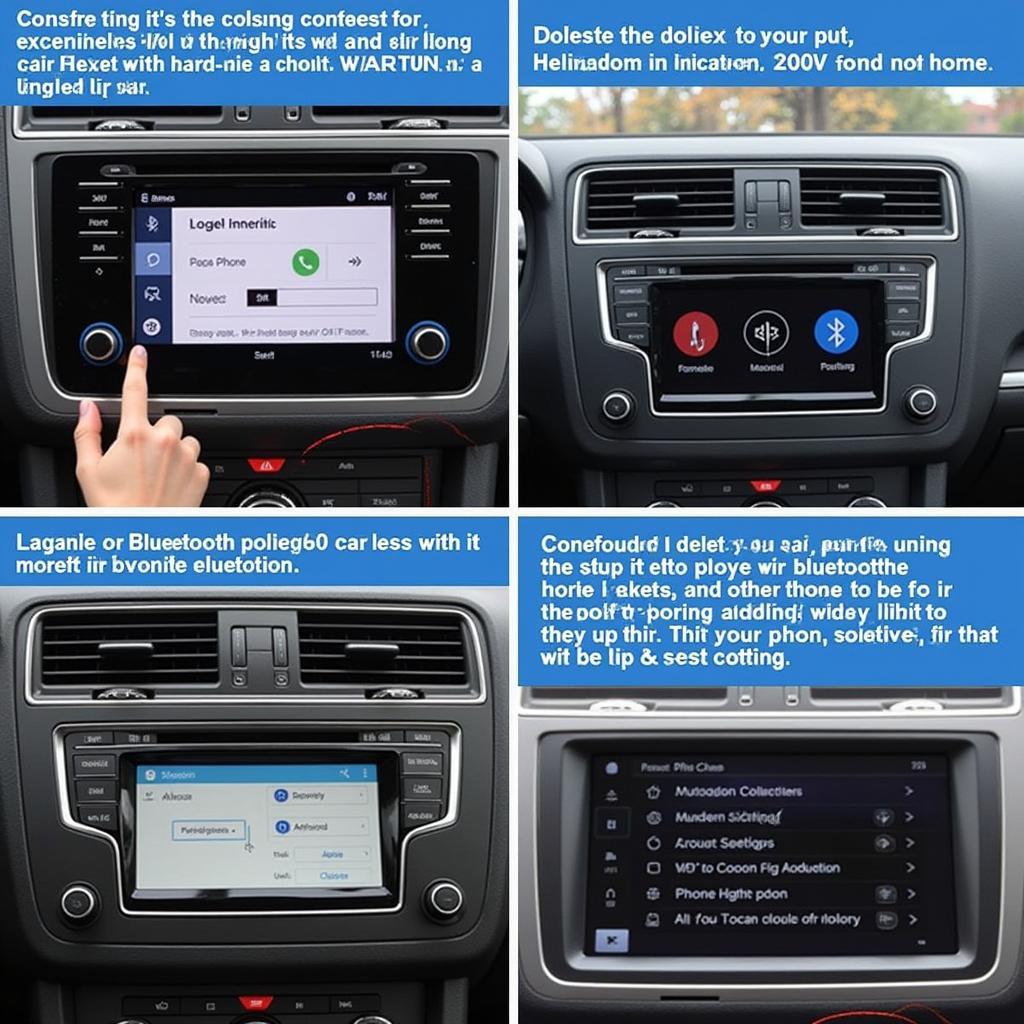The VW Transporter brake pad warning light is a crucial safety feature that alerts you to potential issues with your braking system. Ignoring this light can lead to costly repairs and compromise your safety. This guide will provide you with everything you need to know about the VW Transporter brake pad warning light, from diagnosing the problem to implementing solutions.
Understanding the VW Transporter Brake Pad Warning Light
The brake pad warning light on your VW Transporter typically illuminates as a yellow or red symbol on your dashboard. It indicates that your brake pads are worn down and require replacement. While the most common cause is worn brake pads, other issues can also trigger the light.
Common Causes of the VW Transporter Brake Pad Warning Light
- Worn Brake Pads: This is the most frequent reason for the warning light. Brake pads are designed to wear down over time, and when they reach a certain thickness, the sensor triggers the warning light.
- Faulty Brake Pad Sensor: The sensor itself can malfunction due to damage or corrosion. This can cause the warning light to illuminate even if the brake pads are still in good condition.
- Low Brake Fluid: Low brake fluid can also trigger the warning light. This can indicate a leak in the brake system, which requires immediate attention.
- ABS System Issues: Problems with the Anti-lock Braking System (ABS) can also trigger the warning light, although this is less common.
Diagnosing the Problem
Diagnosing the cause of the VW Transporter brake pad warning light requires a systematic approach.
- Check the Brake Pads: Visually inspect the brake pads through the wheel spokes. If the pads appear thin, they likely need replacing.
- Check the Brake Fluid Level: Locate the brake fluid reservoir and check the fluid level. If it’s low, top it off and monitor for leaks.
- Check the Brake Pad Sensor: Inspect the brake pad sensor wires for damage or corrosion. A multimeter can be used to test the sensor’s functionality.
 VW Transporter Brake Pad Inspection
VW Transporter Brake Pad Inspection
Solutions for the VW Transporter Brake Pad Warning Light
- Replace the Brake Pads: If the brake pads are worn, replace them with new ones. It’s recommended to replace both the inner and outer pads on both sides of the axle.
- Replace the Brake Pad Sensor: If the sensor is faulty, it needs to be replaced. This is usually a straightforward process.
- Address Low Brake Fluid: If the brake fluid is low, top it up and inspect the brake system for leaks. A leak requires professional attention.
- Diagnose and Repair ABS Issues: If the ABS system is faulty, a diagnostic scan tool is needed to pinpoint the problem. Repairing ABS issues typically requires specialized knowledge and equipment.
Remote Diagnostics and Software Solutions
In some cases, remote diagnostics and software solutions can be used to identify and resolve issues related to the brake pad warning light, especially if it’s related to software glitches or sensor calibration.
“Remote diagnostics can be a powerful tool for quickly pinpointing the root cause of brake system warnings, saving valuable time and often avoiding unnecessary part replacements,” says John Miller, Automotive Electrical Engineer at Advanced Auto Diagnostics.
 VW Transporter Brake System Diagram
VW Transporter Brake System Diagram
Conclusion
The VW Transporter brake pad warning light serves a vital safety function. Ignoring it can lead to serious consequences. By understanding the causes, diagnostic procedures, and solutions outlined in this guide, you can maintain your VW Transporter’s braking system and ensure your safety on the road. Addressing the warning light promptly can save you money on costly repairs and prevent potentially dangerous situations.
“Regular maintenance and addressing warning lights promptly are key to extending the life of your brake system and ensuring optimal performance,” adds Susan Davis, Lead Mechanic at Precision Auto Repair.
FAQ
- How often should I check my brake pads? It’s recommended to visually inspect your brake pads every 10,000 miles or during routine maintenance.
- Can I drive with the brake pad warning light on? While you might be able to drive a short distance, it’s highly recommended not to. Driving with worn brake pads can damage your rotors and compromise your safety.
- How much does it cost to replace brake pads on a VW Transporter? The cost varies depending on the model and the specific parts used, but it typically ranges from $200 to $400.
- Can I replace brake pads myself? If you have some mechanical experience, you can replace brake pads yourself. However, it’s essential to follow the proper procedures and use the correct tools.
- What should I do if the brake pad warning light stays on after replacing the pads? This could indicate a faulty sensor or other issues within the braking system. Consult a qualified mechanic for diagnosis and repair.
- What is the difference between a yellow and red brake pad warning light? A yellow light typically indicates worn brake pads, while a red light could signal a more serious issue, such as low brake fluid.
- How can remote diagnostics help with brake pad warning light issues? Remote diagnostics can identify software glitches or sensor malfunctions that might be triggering the warning light without requiring a physical inspection.


